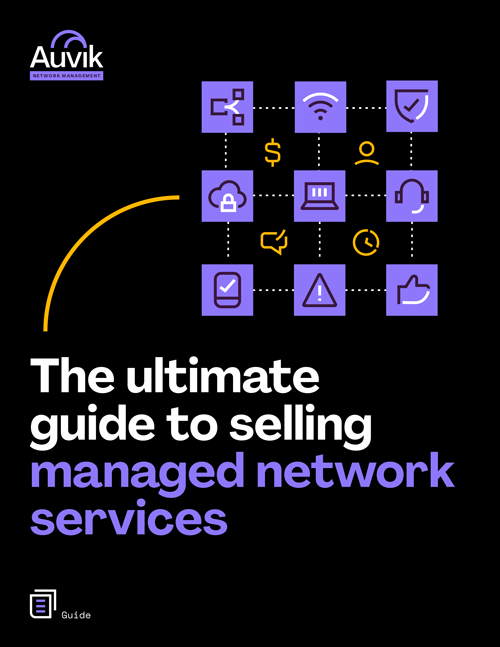Some say we’re in a recession—or at least rapidly heading towards one—while others decry these statements as nothing more than fear mongering. Regardless of which side is right, it’s wise to have a future proof business that can withstand anything, especially when we know the economy is cyclical. What goes up will eventually come down, just as it will go back up again.
The current state of business
If we consider the “official” definition of a recession, then no, we aren’t in one.
According to Investopedia, a recession is a “significant, widespread, and prolonged downturn in economic activity. A common rule of thumb is that two consecutive quarters of negative gross domestic product (GDP) growth mean recession (…).” But the Commerce Department shows that the US GDP increased by 1.1% in the first quarter of 2023, lower than the expected 2% and on the heels of a 2.6% growth in the fourth quarter of 2022. This data indicates an economic slowdown, despite continued consumer spending, even with the higher prices, and experts still expect that we will tip over into a recession but are uncertain of the timing.

How a slower economy will impact IT businesses
Digitalization has been a significant focus for businesses of all sizes for quite a while, but the pandemic accelerated it significantly, dragging the holdouts along in its wake. Companies had two options: adopt remote work and the required IT infrastructure or shut down. It wasn’t much of a choice.
That might be a simplification because we live in a world where being technologically competitive is now a necessity rather than a luxury, but the fact is that the pandemic did more to accelerate tech adoption across all industries (not just the tech sector) than any other event in recent history.
So, while a recession might be in the forecast–during which time companies will be eager to cut costs–IT is one of the areas that will likely remain unaffected (along with accounting and legal). A Gartner report predicts IT spending will grow by 5.5% in 2023, reaching $4.6 trillion. Analysts stated that no matter how challenging the economic environment becomes, it won’t slow down digital transformations, which suggests that businesses are actually prioritizing IT investment.
It’s interesting to note that, within the wider market, the software segment is expected to grow by 9.1%, while the devices segment is predicted to contract by 4.6%. This is likely because organizations are focusing on investments that will gain them a competitive edge, such as through increased productivity and automation. The devices segment will likely contract as a result of decreased consumer spending.
Businesses with the highest risk
Though it may seem like a completely new situation, the fact is that we’ve seen this all before. And the short answer is that the most at-risk organizations are those that can’t quickly adapt to the constantly evolving economic environment.
Of course, we could go into the nitty gritty and name industries and businesses that are likely to suffer, but the bottom line is flexibility. Companies that aren’t flexible enough to change with the times are most likely to experience the biggest challenges. A future proof business will not face these issues because, by its very definition, it is prepared to weather any storm.

Your Guide to Selling Managed Network Services
Get templates for network assessment reports, presentations, pricing & more—designed just for MSPs.
Top 5 future-proofing challenges for MSPs
Considering that the managed services market was valued at $242.9 billion in 2021 and is predicted to reach $354.8 billion by 2026, with the cloud managed services market alone being worth $99 billion in 2022 and expected to grow to $164 billion by 2027, you’d think that MSPs should be safe.
Unfortunately, that’s not quite the case. In fact, the risks might be even greater for MSPs than for your average business in the current economic climate.
Why?
Simply operating in the tech space doesn’t guarantee success. You still have to future proof your business to stay ahead of the curve and ensure your MSP business grows along with the market.
Here are the top 5 issues and challenges MSPs should consider:
1. Supporting remote and hybrid work
As we’ve already said, the pandemic changed a lot of things, especially how people work. Now, remote and hybrid work is as normal as working in an office was as little as three or four years ago.
For MSPs, that means being able to manage these work environments. Your customers come to you because they want the experts to handle their IT. All of their IT.
They don’t want to worry about Fred from procurement surfing the web on his phone, accidentally downloading malware, and then connecting to the company network and compromising it. That’s your job.
So, MSPs must be prepared to deal with all these issues, which means having the right tech, networking tools, and expertise to manage all their IT needs remotely. It might not seem like a big deal, but the challenges involved in maintaining devices you don’t have physical access to can be significant.
And if you don’t have the right tools, like a SaaS monitoring and management solution that allows you to quickly identify and fix issues remotely, it can quickly become a nightmare.
2. Prioritizing cybersecurity
Another thing the pandemic gave rise to is an increase in cyber attacks. Phishing emails went up by something like 600% at the time. Considering the consequences of a data breach for an organization, it shouldn’t come as a surprise that cybersecurity should be a significant concern for MSPs.
In 2022, data breaches were estimated to cost companies $4.35 million. And that’s not considering the loss in subsequent income due to reputational damage. For some organizations, it can spell their doom.
So, as an MSP, you must be on top of your cybersecurity, as well as your clients’. You need a comprehensive, “watertight” strategy that includes training and education for your clients on how to keep themselves safe. According to Stanford University, 88% of data breaches are caused by human error, which means it pays to train your clients’ employees not to click on a link in an email from the Prince of Atlantis promising untold treasure from the deep if only they’ll click.
Maybe client security training hasn’t always been on your radar, but, but this is a service you’ll want to not only offer but also highly recommend to every client.
3. Dealing with the tech talent shortage
Recession or not, there continues to be a shortage of qualified IT talent. At the end of 2022, 86% of CIOs stated they’re dealing with more competition than ever to attract qualified people, and 73% were concerned over IT talent attrition.
If internal IT teams are struggling with finding and keeping talent, it follows that MSPs will as well. Without those people in place, it can be challenging to both meet increasing demand from existing clients and scale your services. It could also affect the quality of your services and your ability to innovate or even keep up with tech advancements. Considering how quickly everything moves in this space, that is a significant concern.
4. Staying on top of tech trends
Tech trends are changing faster than ever. In less than a year, AI hit the mainstream, NVIDIA launched a service allowing any company to create their own large language model without needing a supercomputer, and Apple introduced the Vision Pro headset that will go live in 2024. And that’s just the tip of the iceberg.
As an MSP, you should develop a plan to keep up with these changing tools and to learn new ones. Not only will it be necessary for your own business, but also for your clients. They will expect you to help them navigate these trends to improve risk management and productivity, providing them with a competitive edge. And those are the same benefits your business will experience.

5. Differentiation in a competitive market
That managed services market growth we mentioned earlier also means that there are more MSPs than ever. And the market is growing, so saturation is becoming an issue. If you want a future proof business, you need to find a way to stand out from the crowd and provide your clients with some sort of unique value—something that only you can provide.
That could mean anything from specializing in a particular sector to providing amazing customer service to offering tailored solutions.
For example, the financial sector has to deal with challenges that some other industries might not. They are often prime targets for cyber attacks because they deal with money (think the modern version of bank robberies). But they also must comply with stringent regulatory requirements. An MSP that understands these unique challenges and can provide the necessary support will certainly set itself apart.
What is a future proof business?
A future proof business is one that can withstand anything the world might throw at it. It can survive (even thrive) during economic downturns and quickly adapt to significant industry changes. Essentially, future proofing your business means preparing to deal with the worst scenarios and effectively leverage the best.
What does a future-proof business look like?
The ideal state for a future-proof business is not just strategic but visionary.
What’s the difference?
A strategic IT business is one that has prepared for any changes that might occur and has a well-thought-out plan in place. Its processes are efficient, it has the best tools, and it can do practically anything remotely. It’s always looking for ways to improve and cut costs to provide the best possible value to its customers.
But a visionary MSP is the next step up. It’s more than following best practices for processes, tools and operations; it’s creating new trends and leading the way. This kind of business is already planning for future innovations that will make it as efficient and effective as possible, whether that means using the latest SaaS management software and integrations or cross-training people to overcome the tech talent shortage. At this stage, an MSP is routinely finding new ways to overcome current and future challenges to ensure it can provide customers with the best possible solutions.
When to start future proofing your business
Yesterday was the best time to get started on future proofing your business. But right now is better than tomorrow. Basically, the sooner you prepare your business to deal with upcoming challenges, the better.
Let’s put it this way.
If you lived in an area with frequent hurricanes, would you wait until one hit to come up with an evacuation plan, or would you know exactly what you needed at all times?
The same applies to your business. Recessions are inevitable, and being prepared means ensuring your business can survive and even thrive.
4 reasons why MSPs need to start future proofing now
As an MSP, you might think you don’t have to be concerned. After all, you provide an indispensable service in an area where investments are increasing, no matter how challenging the economic climate is. So, why should you worry?
Here are 4 reasons to take the proverbial bull by the horns:
- Increasing demand for IT services: More companies are turning to MSPs as they become increasingly digital. If your business is prepared to handle the extra demand, you can grow instead of just surviving.
- Rising cybersecurity threats: We’ve already covered this, but cybersecurity is no joke. Bad actors are getting more sophisticated, as are the tools they’re using, so you need to be ready to protect your own systems and your clients.
- Accelerating tech progress: Tech was evolving quickly. Now, there’s a good chance that progress will be far beyond what anyone expects. And you need to stay on top of it to make sure you’re providing your clients with the latest and greatest solutions if you want to stay competitive.
- Growing economic uncertainty: A significant number of events have occurred in recent years that ensure the only absolute certainty in the economy is that the future is uncertain. From the pandemic to the launch of AI, we have no idea how the economy will evolve, and it pays to be prepared for any eventuality.
How to future proof your MSP business
As an MSP, if you want a future proof business, you need to take a holistic approach instead of focusing on one area or another. These strategic decisions will ensure you are successful over the long term.
Here are three high-level areas you should consider.
1. Understand the past
There’s a reason humans are so obsessed with history. It’s because looking at the past shows us a better way forward. We don’t always learn from our mistakes, but being aware of them certainly doesn’t hurt.
The same applies to business. The more you understand about your past, the better able you will be to face future challenges and leverage the opportunities.
So, analyze your financials, your customers, your operations, and your competition. Look at everything and determine what you did right, what you did wrong, what you could do better, and what you should avoid doing in the future. Learn from past mistakes and understand how to do better.
2. Evaluate the present
Next, it’s time to be objective and determine how well prepared you are in the present. It means looking at your current resources, expertise, and the strategies you’ve implemented to see if you have everything you need to effectively deal with any challenges that might arise. And to take advantage of opportunities. After all, it’s not all doom and gloom.
Again, you want to analyze every facet of your business, from your technology and people to your processes and strategies. The key is to be objective and honest with yourself. Your goal is to future proof your business, so look at the situation as if you were an external party determining whether to invest in your business or not. It won’t be easy, but it’s necessary.
3. Prepare for the future
Take steps to prepare every aspect of your business.
- Invest in technology to make sure you can easily adapt to the changing market.
- Upskill your team so you have the expertise to respond to evolving client needs.
- Improve your processes to increase efficiency and reduce costs.
- Develop a strategy that can stand the test of time, meaning that it accounts for any situation, including a survival strategy for recession and a growth plan for economic recovery.
- Stay informed to ensure you know what’s going on in the industry so you can adapt your services and strategies accordingly.
- Focus on customer experience to build relationships with them that will withstand even the most challenging situations.
To create a future-proof MSP business, IT professionals must address key challenges, such as supporting remote and hybrid work, prioritizing cybersecurity measures, overcoming the tech talent shortage, and finding unique ways to stand out in a competitive market
This kind of holistic approach involves learning from the past, evaluating present resources objectively, and investing in future business needs. By becoming visionary leaders, MSPs can thrive in the ever-changing IT landscape and ensure resilience against economic uncertainties.





